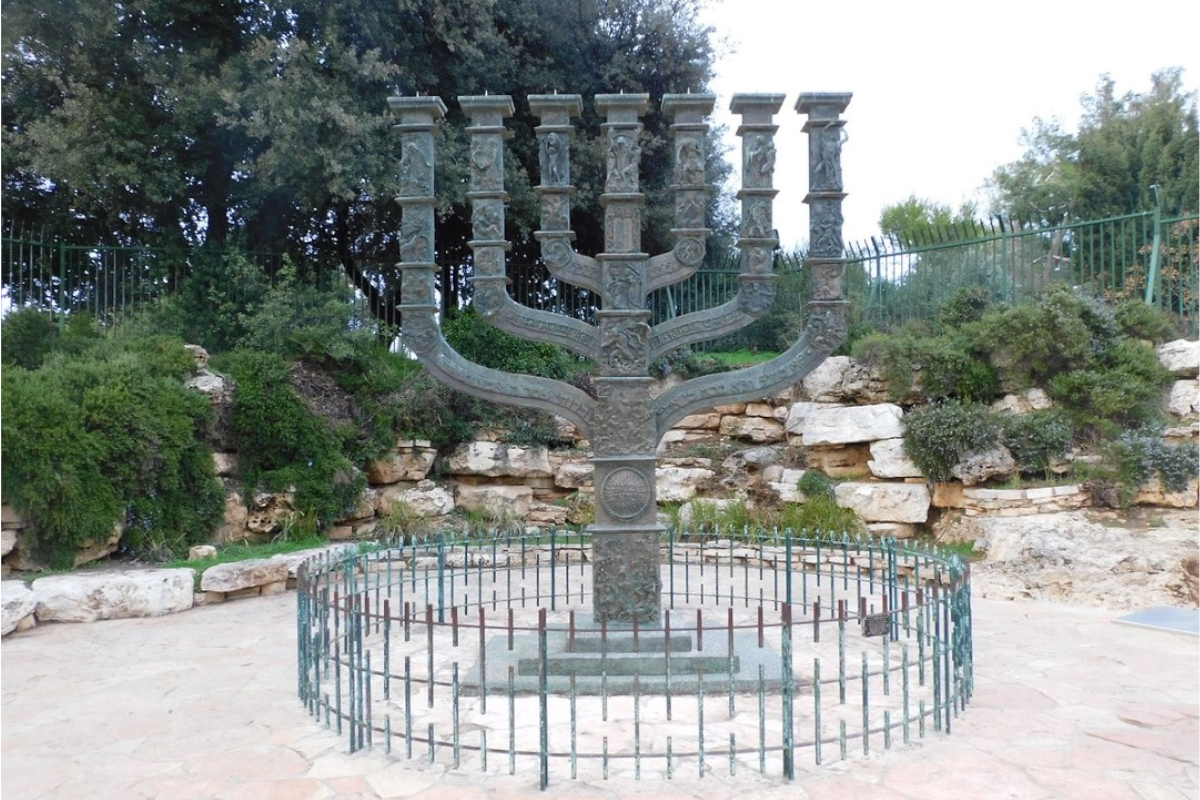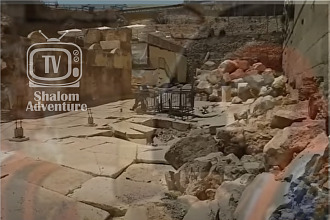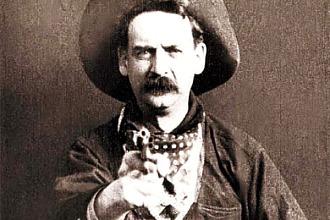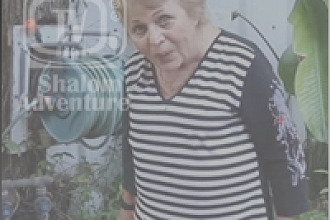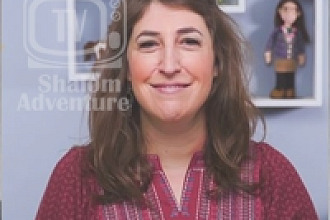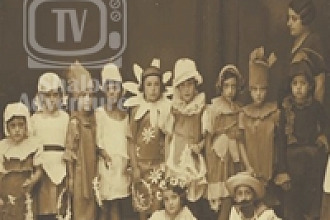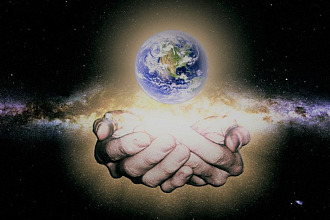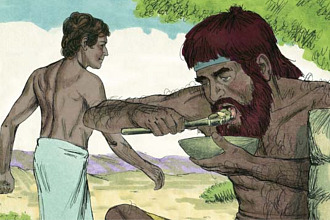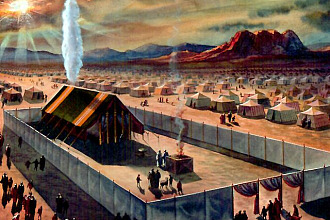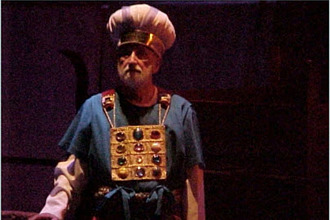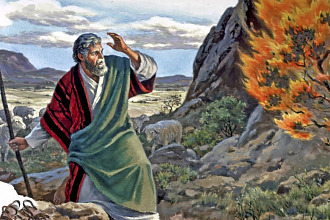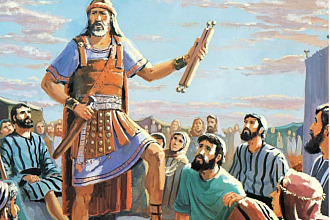Parasha for the Week: Tetzaveh: Exodus 27:20 - 30:10.
Haftarah for the Week: Ezekiel 43:10 – 27.
Besorat Yeshua: Mark 15:16 – 27.
Overview
G-d tells Moshe to command the Jewish People to supply pure olive oil for the menorah in the Mishkan (Tent of Meeting). He also tells Moshe to organize the making of the bigdei kehuna (priestly garments): a breastplate, an ephod, a robe, a checkered tunic, a turban, a sash, a forehead-plate, and linen trousers. Upon their completion, Moshe is to perform a ceremony for seven days to consecrate Aharon and his sons. This includes offering sacrifices, dressing Aharon and his sons in their respective garments, and anointing Aharon with oil.
G-d commands that every morning and afternoon a sheep be offered on the altar in the Mishkan. This offering should be accompanied by a meal-offering and libations of wine and oil. G-d commands that an altar for incense be built from acacia wood and covered with gold. Aharon and his descendants should burn incense on this altar every day.
Spiritual Development
The Torah states, "Make a forehead plate of pure gold, and engrave on it, (the words), 'Holy to God.' Attach a twist of sky-blue wool to it, so that it can be (worn) right near the front of the turban" (Exodus 28:36-37). Each of the garments of the Cohanim, the Priests who served in the Mishkan, had a spiritual correspondence and influence. The turban, which is on top of the head, atoned for arrogance and conceit. Arrogance is a trait that is detrimental to one's spiritual development and causes many difficulties when dealing with other people. There is, however, a time for pride -- when a person is proud to do the will of the Almighty. The Ksav Sofer, a great rabbi, commented that this is alluded to in our verse. When pride is "holy to the Almighty" then it can be on top of a person's head.
The Light of the Menorah
The Parasha begins, "And you shall command the Children of Israel, that they take to you pure olive oil, beaten for the light to cause the lamp to burn continually." The Parasha speaks about the oil used to light the Menorah in the Holy Temple. The oil had to be pure, without the slightest sediment. Our sages tell us that when the olives were crushed to release the oil, only the first drop of oil from each olive was used for lighting the Menorah. Olive oil represents wisdom. The Menorah and its lights represent the Torah, as it is stated, "Torah is light." The Torah illuminates the darkness of the world and guides a person in the right path, giving purpose and value to life. Just as the Menorah in the Holy Temple had to be lit each day, so must every Jew light up his/her day with the light and wisdom of Torah. "Even a little bit of light," say our sages, "pushes away much darkness." Studying the Torah daily is also emphasized by the seven lights of the Menorah, which correspond to the seven days of the week. In the Tehilim, it is written "Your word is a lamp to my feet and a light to my path" (Ps. 119:105), that's why it is wise to meditate and to study the Torah, the Word of G-d every day. We discover that Israel gives light in the world because it is said "The light of Israel will become a fire" (Is. 10:17), and through this example of Israel we understand that every believer is light in the sphere of his living. Yeshua said to his talmidim "You are the light" (Matt 5:14), and of course the supreme light is the Messiah himself for whom it is said "in him was life, and the life was the light of all people" (John 1:4).
However we have another symbol in the light of the menorah. Because on the menorah were flames and these flames gave light to the sanctuary. G-d is our flame "The light of Israel will become a fire, and his Holy One a flame" (Is. 10:17). The Holy One is a flame. That's why when he sent to the talmidim of Yeshua his Ruach, the Ruach Elohim; this Ruach came on them as flames. "The festival of Shavu'ot arrived, and the believers all gathered together in one place. Suddenly there came a sound from the sky like the roar of a violent wind, and it filled the whole house where they were sitting. Then they saw what looked like tongues of fire, which separated and came to rest on each one of them. They were all filled with the Ruach Hakodesh" (Acts 2:1-4). This very same Ruach Elohim is willing to help us in our life and our testimonies. We have just to welcome him in our heart. An author I like very much gives this symbol, this application: "Wherever we are, we must let our light shine forth to the glory of G-d in good works. This is the great, the important work of our lives. Those who are really under the influence of the Ruach Hakodesh will reveal its power by a practical application of the eternal principles of truth. They will reveal that the holy oil is emptied from the two olive branches into the chambers of the soul temple. Their words will be imbued with the power of the Ruach Hakodesh to soften and subdue the heart. It will be manifest that the words spoken are spirit and life."
The Prophet Jeremiah compares the people of Israel to an olive; "A fresh olive, a fruit of beautiful shape did G-d call your name" (Jeremiah 11:15). The olive represents the Jewish people. Our sages explain the parallel between the olive and the Jewish people. An olive produces its oil only after being squeezed and pressed. Similarly, the Jewish people have produced some of our greatest luminaries, the most outstanding Torah scholars, during their years of oppression, suffering, and exile. For example, the Mishna, Talmud, etc. were produced while Jews lived under harsh physical situations. Light plays an important role in Judaism. In the synagogue there is a "Ner Tamid" a light which burns constantly, usually near the ark, where the Torahs are stored. It commemorates the western lamp of the Menorah in the Beth Hamikdash that burned continuously. We usher in Shabbat and holidays with candles to bring light, peace and holiness into our home.
High Priest's Garments
The garments of the high priest were of costly material and beautiful workmanship, befitting his exalted station. In addition to the linen dress of the common priest, he wore a robe of blue, also woven in one piece. Around the skirt it was ornamented with golden bells, and pomegranates of blue, purple, and scarlet. Outside of this was the ephod, a shorter garment of gold, blue, purple, scarlet, and white. It was confined by a girdle of the same colors, beautifully wrought. The ephod was sleeveless, and on its gold-embroidered shoulder pieces were set two onyx stones, bearing the names of the twelve tribes of Israel. Over the ephod was the breastplate, the most sacred of the priestly vestments. This was of the same material as the ephod. It was in the form of a square, measuring a span, and was suspended from the shoulders by a cord of blue from golden rings. The border was formed of a variety of precious stones, the same that form the twelve foundations of the City of God. Within the border were twelve stones set in gold, arranged in rows of four, and, like those in the shoulder pieces, engraved with the names of the tribes. The Lord's direction was, "Aaron shall bear the names of the children of Israel in the breastplate of judgment upon his heart, when he goeth in unto the holy place, for a memorial before the Lord continually" (Exodus 28:29). So the Messiah, the great High Priest, pleading His blood before the Father in the sinner's behalf, bears upon His heart the name of every repentant, believing soul. Says the psalmist, "I am poor and needy; yet the Lord thinketh upon me" (Psalm 40:17) [PP 351].
Haftarah: Ezekiel 43:10 - 27
Haftarah: The parasha describes the sanctuary, so the Haftara is also about the sanctuary: "O mortal, describe the Temple to the House of Israel, and let them measure its design. But let them be ashamed of their iniquities" (Ez 43:10). "When they are ashamed of all they have done, make known to them the plan of the Temple and its layout, its exits and entrances — its entire plan, and all the laws and instructions pertaining to its entire plan. Write it down before their eyes, that they may faithfully follow its entire plan and all its laws" (Ez. 43:11).
Besorat Yeshua Mark 15:16 - 27
Parasha: "Make sacred garments for your brother Aaron, to give him dignity and honor. Tell all the skilled men to whom I have given wisdom in such matters that they are to make garments for Aaron, for his consecration, so he may serve me as priest (Exodus 28:1-3). Every element of the sanctuary applies to the Messiah. The Messiah is king as "Son of David" (Mat.1:1), but he is also priest, not according to the Leviticus and Aaronic order but according to Melchizedek 'The LORD has sworn and will not change his mind: "You are a priest forever, in the order of Melchizedek" (Ps. 110:4).
Besorah: Yeshua is going to the Golgotha in the hands of the Roman solders. Laughing at him they mocked him "They put a purple robe on him, then twisted together a crown of thorns and set it on him. And they began to call out to him, "Hail, king of the Jews!" Again and again they struck him on the head with a staff and spit on him. Falling on their knees, they paid homage to him. And when they had mocked him, they took off the purple robe and put his own clothes on him. Then they led him out to crucify him" (Mark 15:17-20). It is important to notice that it is not the Jewish people who crucified Yeshua, but the Romans. Crucifixion has never been a Jewish way to put to death murders. "They crucified two robbers with him, one on his right and one on his left" (Mark 15:27). It is exactly what the prophecy says when Isaiah wrote: He was assigned a grave with the wicked . . . and was numbered with the transgressors (Is. 53:9, 12).

